Jewellery as art: Unique pieces make a statement at Bonhams Fine Jewellery Sale
An art deco laque burgauté and corallium rubrum box, by Cartier, Circa 1925.£10,000-15,000 (€14,000 - 21,000). Photo: Bonhams.
LONDON.- Art jewellery is making a statement. Seen at fairs such as Design Miami, art jewellery, created by legends of the design world such as Coco Chanel, Cartier and Andrew Grima, is taking centre stage.
Bonhams has a wonderful series of pieces by these artists in its forthcoming Fine Jewellery sale on 22 April, where in addition to dazzling jewels, items showcasing creative expression take pride of place.
One of the lots, a retro twist necklace by Coco Chanel, set with oval citrine cabochons, is estimated at £4,000-6,000. Fine jewellery by Chanel is extremely rare, and the undulating links of this choker-style piece are designed for both style and comfort. As Chanel said herself, “Luxury must be comfortable, otherwise it is not luxury.”
The signature on this piece dates from between 1954 and 1971. Chanel often designed clothing and accessories to go together as one cohesive statement, and this necklace would have perfectly suited the changing post-war fashions of the mid-20th century.
A retro citrine-set twist necklace, by Chanel, 1954-71. Estimate £4,000 - 6,000 (€5,500 - 8,200). Photo: Bonhams.
The collar composed of two rows of undulating polished tubular links studded at intervals with oval citrine cabochons with a sugarloaf citrine cabochon clasp, all citrines in closed-back settings, signed Chanel, French assay marks, interior circumference approximately 37.0cm
Notes: "To make her jewellery she would sit in her salon perched on the edge of the sofa, playing with a ball of soft plastic, like chewing gum. In front of her on her low Chinese table there would be boxes and little bowls holding stones of all different shapes and sizes which she would embed in her gum, flattened out on the table as fantasy took her."
The influence of Coco Chanel, legendary 20th century couturier and founder of the eponymous luxury brand, is still felt today, over forty years since her death in 1971. Chanel not only transformed women's fashion, she was just as ground-breaking in her jewellery designs. In deliberate contrast to the pared-down chic of her clothes, her jewels embraced form and a "sophisticated crudeness"; in other words the direct opposite of traditional fine jewellery. Hence, the stark simplicity of Chanel's Little Black Dress and the simple luxury of her Chanel Suit were offset with colourful, exuberant jewels that were flexible enough to follow the lines of the body and expressive enough to lend the wearer individuality. As Mademoiselle explained "my jewellery never stands in isolation from the idea of women and their dress. And because dresses change, so does my jewellery."
For further information and examples of Chanel's post-war designs, including gold and gem-set "twist" jewels, see "Jewelry by Chanel", Mauriès, Patrick, Thames & Hudson, 1993, pp95-6.
The talents of German-born Wilhelm Schmidt (1845-1938) were such that he is rightly regarded as a sculptor. A late-19th century opal cameo brooch that is attributed to him, estimated at £10,000-15,000, is a minutely detailed piece carved from a single piece of opal matrix, depicting the head of Mercury in profile. The front of the brooch features the god’s feathered helmet in precious opal, while his bearded face consists of contrasting dark opal matrix.
Schmidt claimed to be the first to carve opal into cameos in the 1870s. Originally from Idar in south-west Germany, a town known for mineral and gemstone trading and engraving, Schmidt was sent to a workshop in Paris at the age of 15 where he first learned the art of cameo cutting from the Parisian masters.
After the outbreak of the Franco-Prussian war in 1870, Wilhelm and his brother Louis, a mineral importer, emigrated to London and set up a business at Hatton Garden. The move was well timed given the prosperity of Victorian England and the popularity of ‘archaeological’ jewellery which resulted in a demand for engraved gems by first-rate artisans. Although there is no complete record of Schmidt’s work for individual jewellers, it is known that he collaborated with John Brogden whose opal cameo necklace won a gold medal at the Paris International Exhibition in 1878.
A late 19th century opal cameo brooch, probably by Wilhelm Schmidt. Estimate £10,000-15,000 (€14,000 - 21,000). Photo: Bonhams.
Carved three dimensionally from a single piece of opal matrix, depicting the head of an idealised romatic hero facing right, his feathered helmet in precious opal on the front, his bearded profile and the reverse in carved opal matrix, mounted in yellow gold, length 3.8cm
Notes: "In reply to your wish to be informed when opal cameos were first cut in Europe, I may mention the date of 1874, when I invented the new process of cutting opal cameos in such a manner as to utilise the matrix of rough opal for the ground... Mr John Brogden exhibited the first one, which I cut, amongst his other exhibits at the Paris Exhibition, 1878..."
These were the words of German cameo engraver, Wilhelm Schmidt, (1845-1938), to gem collector, Abraham Booth, who owned numerous fine examples carved by the talented Schmidt.
Schmidt was born in Idar Oberstein, the European centre of the mineral, gemstone and lapidary trades. At the age of 15, he was sent to Paris as an apprentice and was taken under the wing of cameo-cutter, Arsène, who trained him in the neo-classical tradition. Despite his prodigious talent and winning prizes for drawing and draughtsmanship, by the time he graduated in the 1860s, the French fashion for stone cameos, either mounted as jewellery or as collectables for amateur students of antiquity, was waning.
Eventually, after several tough years, Schmidt settled in London, where he set up an engraving business in Hatton Garden, trading alongside his gem-dealing brother Louis, who imported numerous unusual and rare specimens with which he could work. Schmidt carved cameos for many of the best jewellery firms, including John Brogden, Guiliano and Child & Child, and attracted several prestigious patrons including the Museum of Practical Geology, to whom he sold cameos engraved from quartz, sardonyx, jasper, labradorite, moonstone and of course the most unusual stone of all opal, which was to become his trademark.
Carving opal is a hazardous undertaking to say the least, as opal can crack and spoil if the temperature conditions fluctuate. To quote the late scholar Gertrud Seidmann, a connoisseur of Schmidt's work, and to whom we are indebted for our knowledge of him: "opal cameos, if rare, were not unknown (in the 19th century) but Schmidt had invented a novel technique: instead of carving the whole cameo from precious opal, he used blanks with a thin layer of precious opal overlaying the matrix, in the same way in which the contrasted layers of agates were traditionally used to set off the background."
Schmidt never signed his work and the cameos he produced for jewellery shops and dealers were never credited to him. Examples, attributed by Seidmann, are in the collections of the Natural History Museum, London, the British Museum and the Fitzwilliam Museum, Cambridge. The examples offered here are superlative examples of the difficult art of cameo carving.
Literature: Seidmann, Gertrud. 1988. Wilhelm Schmidt: The Last Neo-Classical Gem-Engraver. London: Source Title: Apollo CXXVIII No. 317 (July-1988). For the information given here on Schmidt and his cameos.
Illustrated Catalogue of Gems, Cameos & Amber Collected by A. Booth, Gloucester, published before 1923.
A late 19th century opal cameo brooch, probably by Wilhelm Schmidt. Estimate £8,000 - 10,000 (€11,000 - 14,000). Photo: Bonhams.
Oval, depicting the bust of a warrior, facing right, his elaborate helmet and dress rendered from a layer of precious opal, his face carved from the matrix beneath, against a cross-hatched matrix ground, within a silver frame,signed CG Paris, length 8.0cm
The House of Cartier is well-known for its artistic verve and two stunning examples showcase the talents of the legendary French jewellers. The playful side of art jewellery can be seen in the Cartier enamel, coral and diamond ladybird brooch, circa 1925-30, which carries a pre-sale estimate of £6,000-8,000.
An enamel, corallium rubrum and diamond ladybird brooch, by Cartier, circa 1930. £6,000 - 8,000 (€8,200 - 11,000). Photo: Bonhams.
The coral body collet-set with eight brilliant and single-cut diamond spots, the head and legs decorated with black enamel, diamonds approximately 0.10 carat total, signed Cartier Paris, numbered 05060, maker's mark, French assay marks, length 2.1cm
A small art deco laque burgauté and coral box, circa 1925, features lacquer panels inlaid with mother-of-pearl and engraved silver sections (£10,000-15,000).
Laque burgauté refers to the exquisite East Asian technique of decorating lacquer with intricate inlays of tinted mother-of-pearl, often engraved and combined with gold and silver foil. The technique originated in China as early as the Ming Dynasty in the 14th century, and remained popular for centuries afterward spreading to nearby areas including Japan. Cartier in the 1920s and 30s had reached their zenith as master craftsmen by reviving these ancient techniques.
An art deco laque burgauté and corallium rubrum box, by Cartier, Circa 1925.£10,000-15,000 (€14,000 - 21,000). Photo: Bonhams.
Of rectangular form with rounded corners, each side set with a black lacquer panel with an inlaid design employing shaped iridescent mother-of-pearl and engraved silver sections, the obverse and reverse depicting chinoiserie garden scenes, the pushpiece inset with a cabochon coral "bamboo" baton, the sides of the box engraved with flower motifs, opening to reveal a tortoiseshell interior, signed Cartier Paris Londres New York, numbered 0644, French workshop marks, dimensions 8.4 x 5.8cm, fitted case by Cartier
Note: Laque burgauté refers to the exquisite East Asian technique of decorating lacquer with intricate inlays of tinted mother-of-pearl, often engraved and combined with gold and silver foil. The technique probably originated in China as early as the Ming Dynasty (1368-1644) and was very popular during the Qing dynasty (1644-1911/12) and spread to the Ryukyu Islands between China and Japan and thence to Japan itself. In China the technique is called 'lo tien' and in Japan, 'aogai'. The Western name is derived from the French - sea-ear or mussel (burgau) and lacquer (laque or lac). Most of the lacquer used by Cartier in their art deco objects is likely to have been made in Ryukyu or in Japan.
Andrew Grima, the 20th century master, also contributes to this strong showing of art jewellery. One piece, a gold and diamond-set 'Super Shell' necklace (£8,000-12,000), features a large spiral seashell pendant 'wrapped' in gold and single-cut diamond detail. Launched in 1972, Grima’s ‘Super-Shell’ range of jewellery was inspired by exotic shells that the jeweller had acquired in Australia, which he then converted into stylish and wearable pieces.
Andrew Grima is renowned as the father of contemporary jewellery design. He became the foremost modern jewellery designer in the 1960s and 1970s, selling designs from his gallery in Jermyn Street, Mayfair. His clients included members of the British royal family, as well as glamorous names such as Jacqueline Onassis and the sculptor, Barbara Hepworth. Grima’s work was revolutionary: he mined the potential of semi-precious stones such as tourmalines, topazes, and opals, to dazzling effect.
A gold and diamond-set 'Super Shell' necklace, by Andrew Grima, 1972-3. Estimate £8,000 - 10,000 (€11,000 - 14,000). Photo: Bonhams.
The large spiral seashell pendant 'wrapped' in gold and single-cut diamond detail, terminating in a brilliant-cut diamond drop, suspended from a rigid V-shaped engraved collar, mounted in 18 carat yellow gold, signed Grima, maker's mark AGLtd, London hallmark, shell length 9.5cm
Note: Andrew Grima's "Super-Shell" collection was launched in 1972. The range of jewellery was designed around a variety of large and unusual shells that Grima had acquired in Australia and which he converted into stylish and wearable pieces.
Another superb Grima piece is a wood opal and diamond pendant necklace and ring suite (£6,000-8,000), also dating to 1972-3. Wood opal is a form of petrified wood which has developed an opalescent sheen. This striking stone is enhanced in these pieces by subtle diamond accents and arresting 18 carat gold settings.
An 18 carat gold, wood opal and diamond pendant-necklace and ring, by Andrew Grima, 1972-73. Estimate £6,000 - 8,000 (€8,200 - 11,000). Photo: Bonhams.
The wood opal 'boulder' pendant wrapped in yellow gold ribbons with brilliant-cut diamond accents, suspended from a chain of yellow gold baton links, the ring set with a triangular slice of wood opal, resembling a geological map, accented by brilliant-cut diamond 'lightning' and mounted in yellow gold, chip to wood opal pendant, both signed Grima, workshop marks AGLtd, London hallmarks, diamonds approximately 0.25 carat total, necklace length 66.0cm, pendant length 6.0cm, ring size M, both with maker's case.
Jean Ghika, Head of Jewellery UK and Europe, comments, “Art jewellery is about so much more than making a statement of wealth. These striking and often bold pieces reflect both the personality and taste of the wearer.”
The sale takes place at Bonhams, 101 New Bond Street, at 2pm on 22 April.

/https%3A%2F%2Fprofilepics.canalblog.com%2Fprofilepics%2F1%2F0%2F100183.jpg)
/https%3A%2F%2Fstorage.canalblog.com%2F03%2F02%2F119589%2F96711876_o.jpg)
/https%3A%2F%2Fstorage.canalblog.com%2F11%2F31%2F119589%2F94773502_o.jpg)
/https%3A%2F%2Fstorage.canalblog.com%2F20%2F83%2F119589%2F94772815_o.jpg)
/https%3A%2F%2Fstorage.canalblog.com%2F26%2F72%2F119589%2F75604929_o.jpg)
/https%3A%2F%2Fstorage.canalblog.com%2F59%2F60%2F119589%2F26458628_o.jpg)
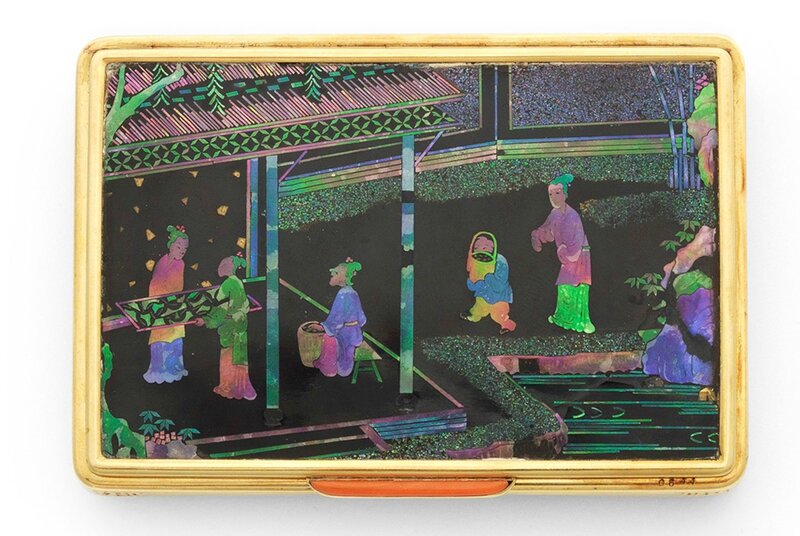


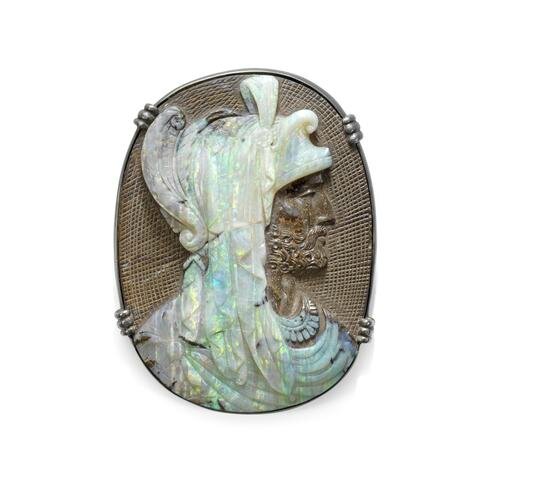

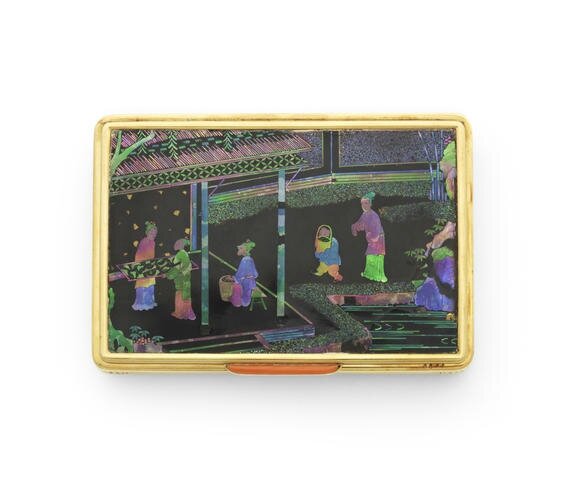
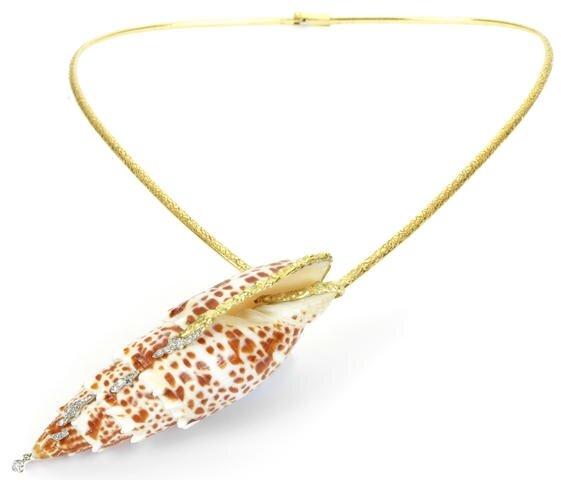
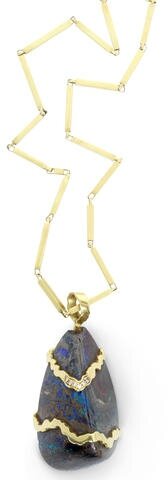



/image%2F1371349%2F20240315%2Fob_456a00_f12fdad5-0750-48f5-ae8f-7bd6836745f7.jpg)
/http%3A%2F%2Fstorage.canalblog.com%2F86%2F67%2F119589%2F129815803_o.png)
/http%3A%2F%2Fstorage.canalblog.com%2F40%2F54%2F119589%2F128112000_o.jpg)
/http%3A%2F%2Fstorage.canalblog.com%2F97%2F36%2F119589%2F128062654_o.png)